excavation of adler and sullivan's schiller building wood pile foundation as documented by richard nickel in 1961
This entry was posted on January 4 2020 by Eric
a brief description on the use of wood piles for the foundation supporting adler and sullivan's schiller theater building (1892), along with several images taken by richard nickel in 1961, when the building was demolished and ground excavated exposing the largely intact foundations (including oak wood planks, concrete, and steel rail grillage). with the discovery of the piles after the site was cleared below grade, engineers performed a series of load tests that found the existing wood piles suitable to support the parking garage replacing the garrick theater.
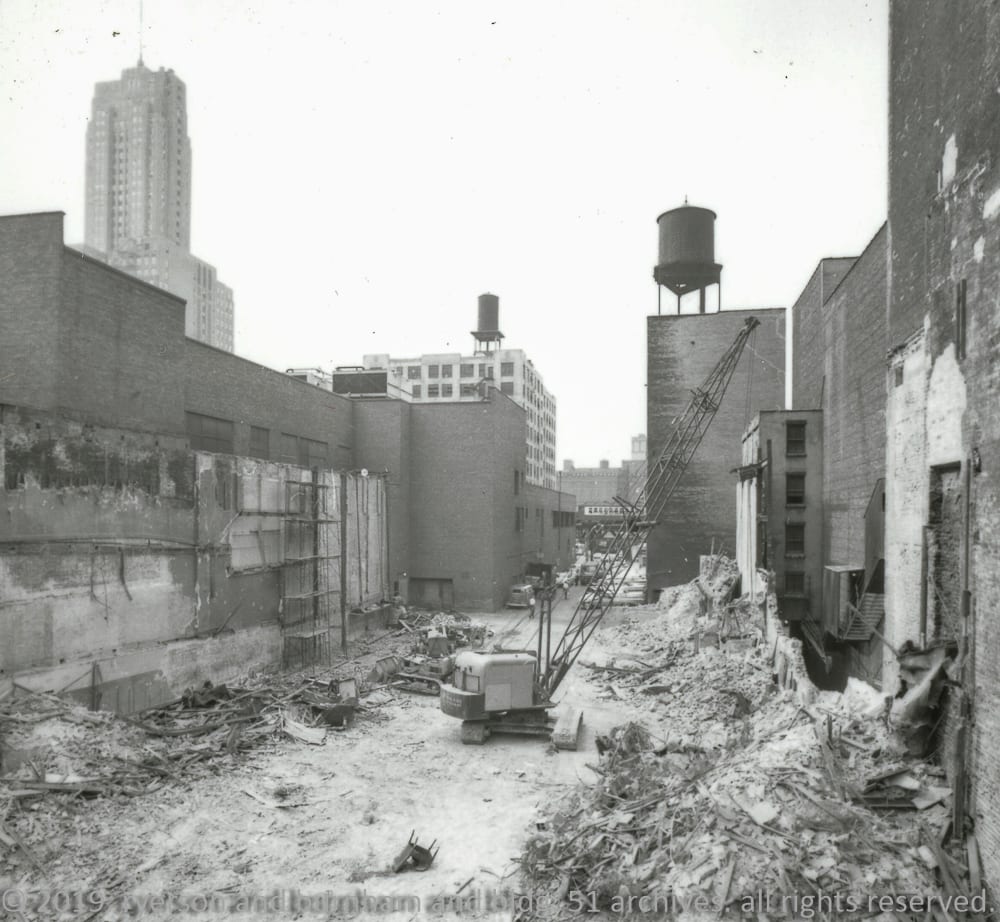
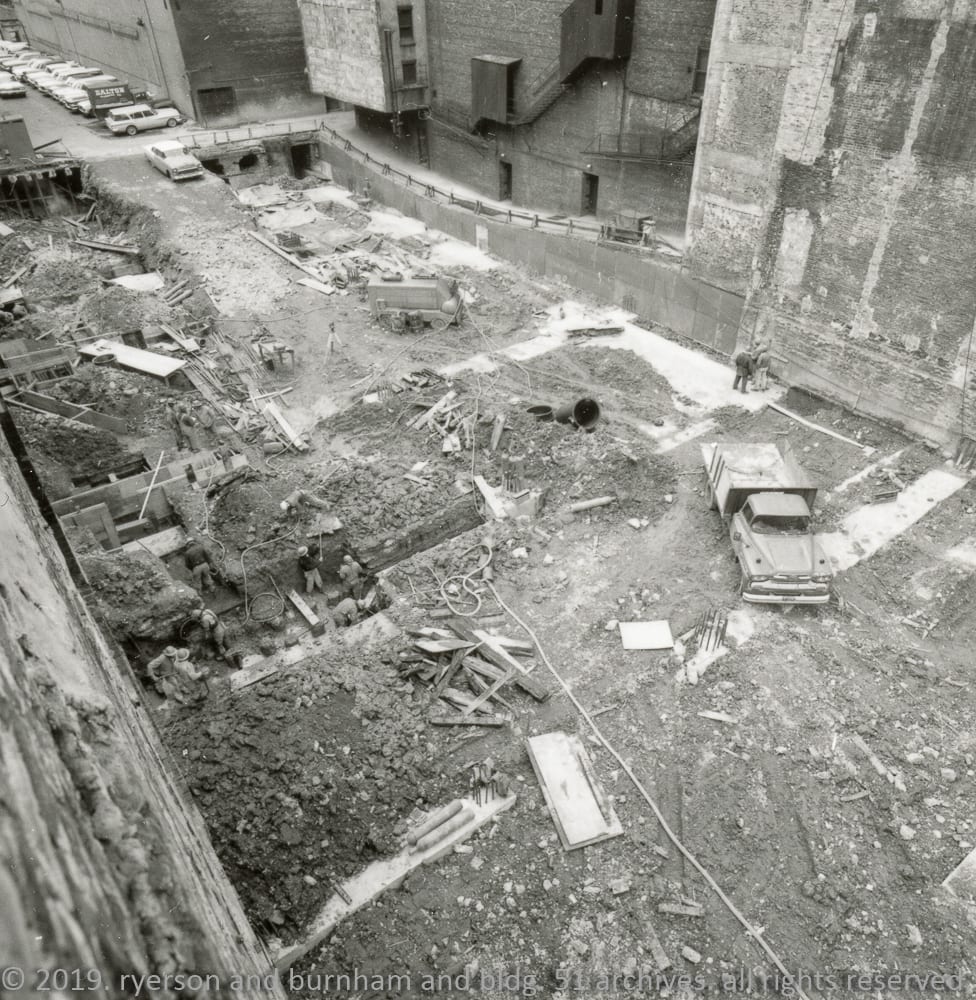
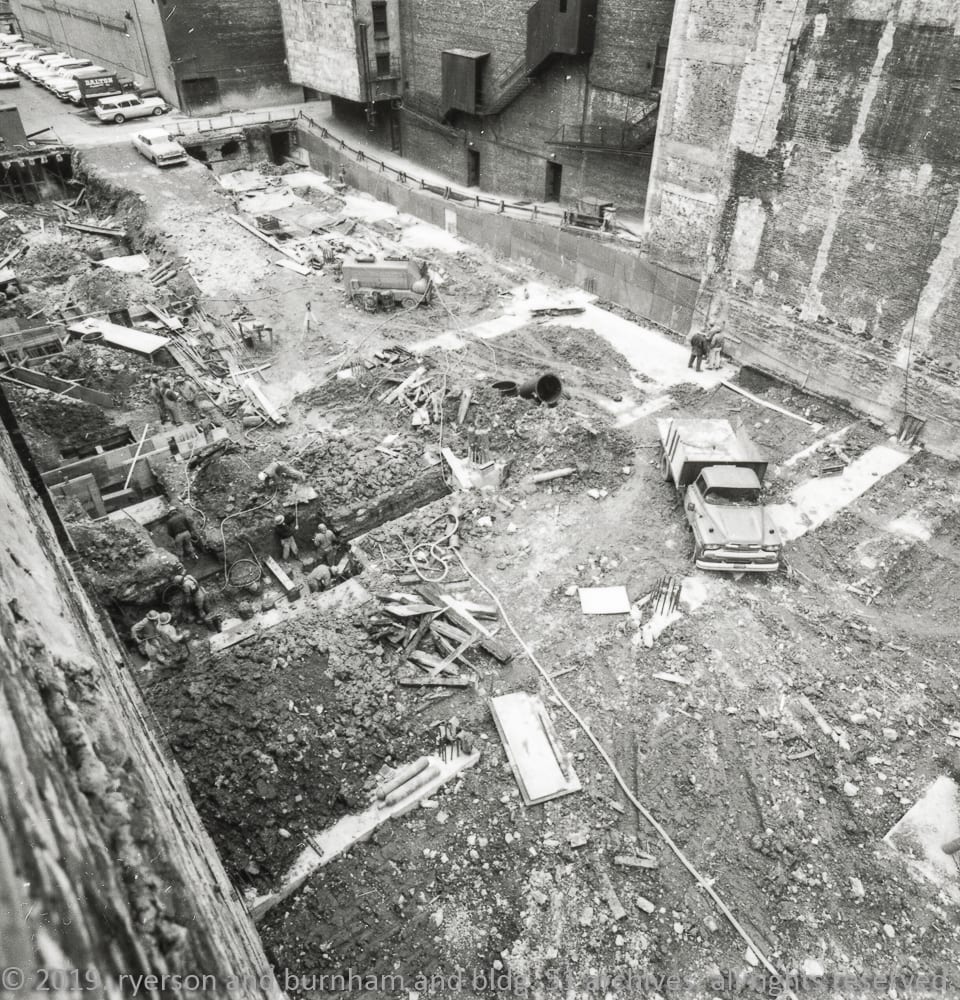
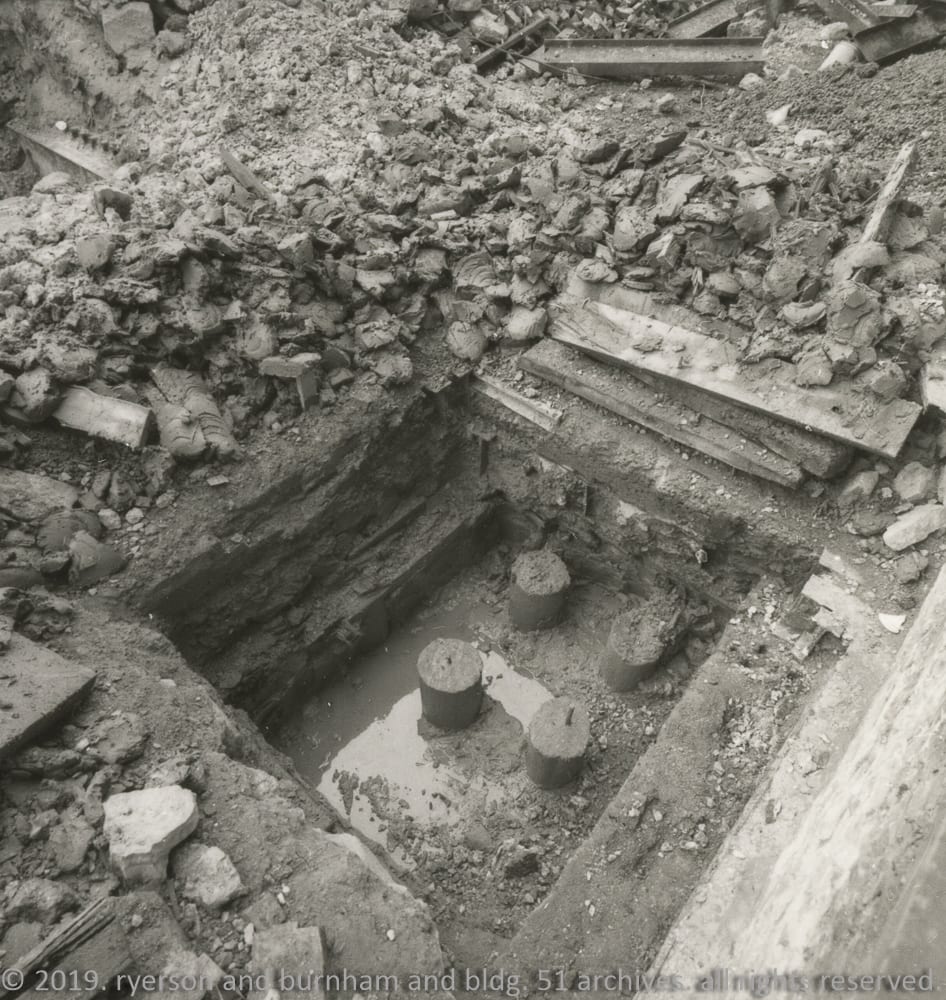
dankmar adler discusses the process of deciding on the revolutionary use of piles in the construction of the schiller theater building on june 25th 1891 to the editor of the economist : “the surface of the entire lot had been covered with piles of the same length, a monolith of concrete strengthened by steel beams and girders, acting as cantilevers and as girders”. this formation resulted in loads on any portion of the structure re-distributed through this girder and cantilever construction of steel and concrete over the entire foundation. instead of 700 piles, there would be 1700 piles or enough to carry two and a half times the load, and adler theorized that this would allow for future constructions using this technique that would “reach still greater heights”.

the fifty foot piles were driven through soft mud, until their points struck the tunnel clay some 42-48’ below. here they are given “a sufficient number” of blows to ensure that the points penetrate the subsequent hard clay, without driving the points so far as to turn them into fibers. the heads of the piles are then cut off at a uniform level – about 3’ below sewer level or water line. then the piles are covered by a grillage consisting of oak timbers running crosswise. both layers drift bolted into the heads of the piles. a foundation of is formed with concrete and i-beams – with the other parts acting as cantilevers for carrying arts of enclosing walls. the enclosing walls are erected in immediate contact with the old party walls of the adjacent buildings. the pile foundations serve as direct support, as the fulcrum for foundation cantilevers, and as the support of foundation girders adapted in each case to the peculiarities of the situation. any additional loading of the adjacent soil from adjacent buildings cannot affect the pile foundations which extend to the hard substratum clay.
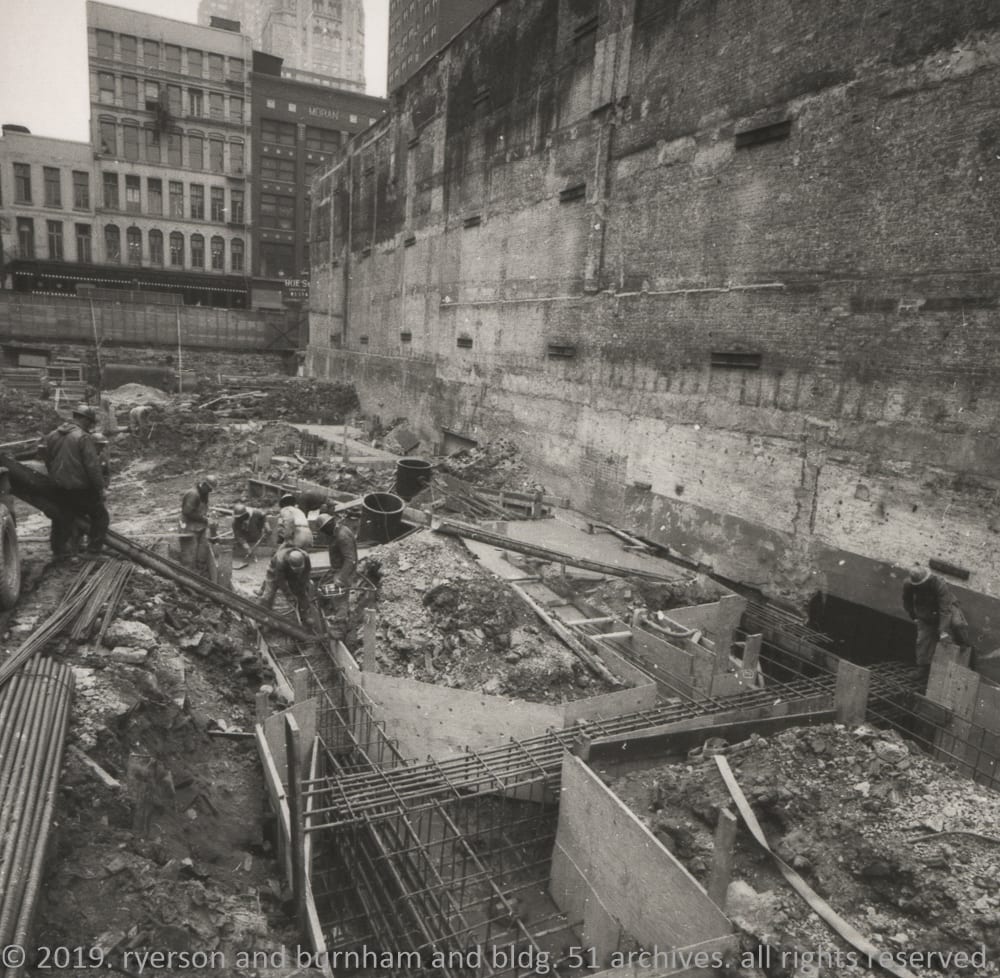
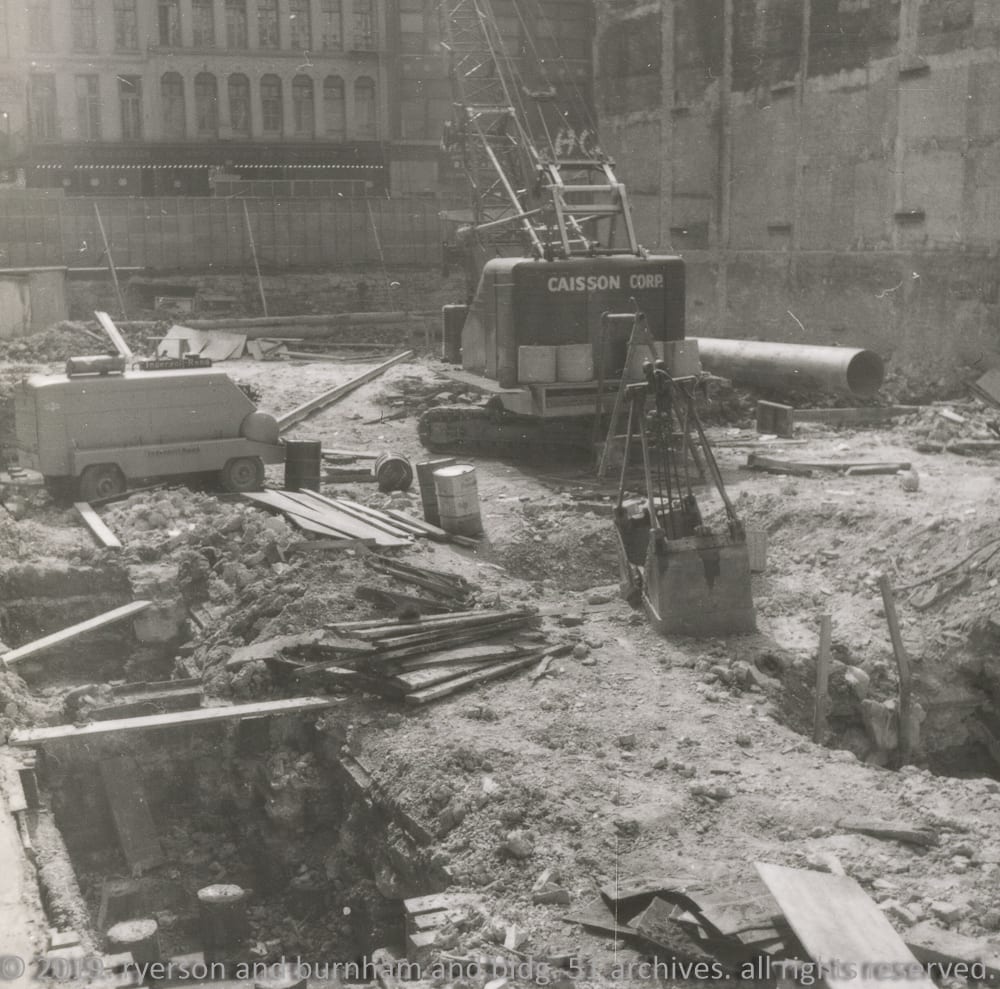
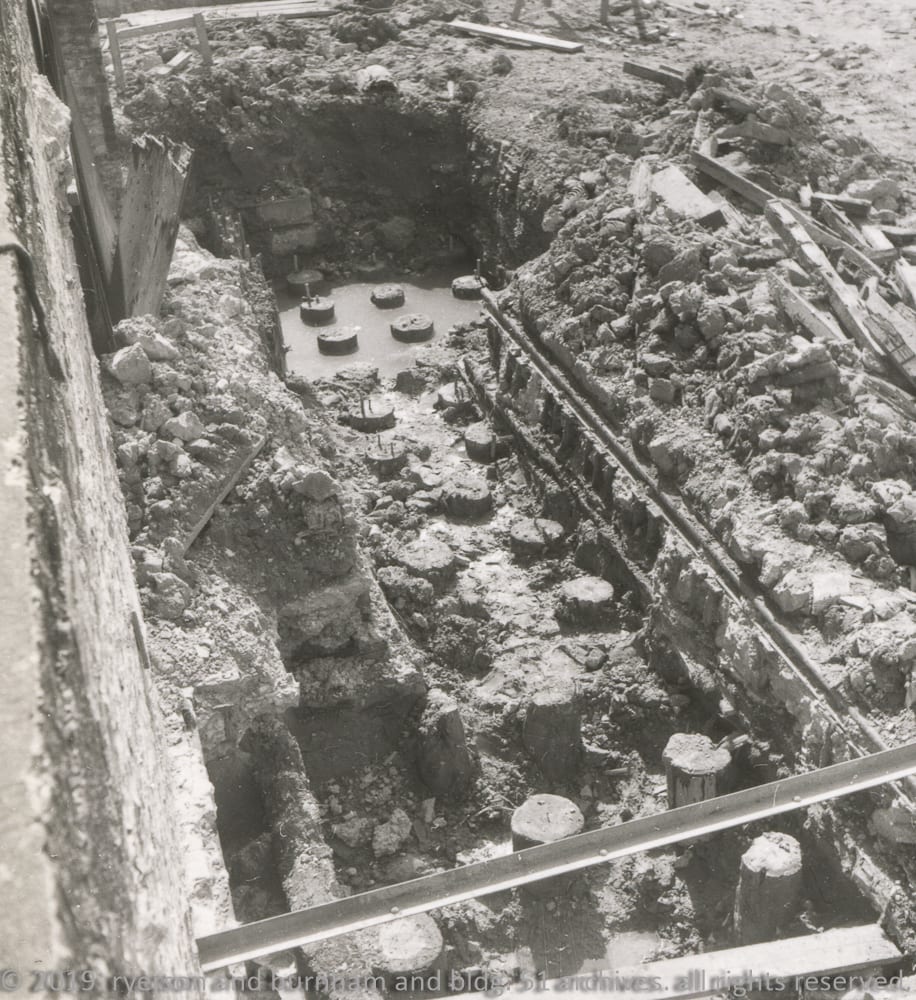
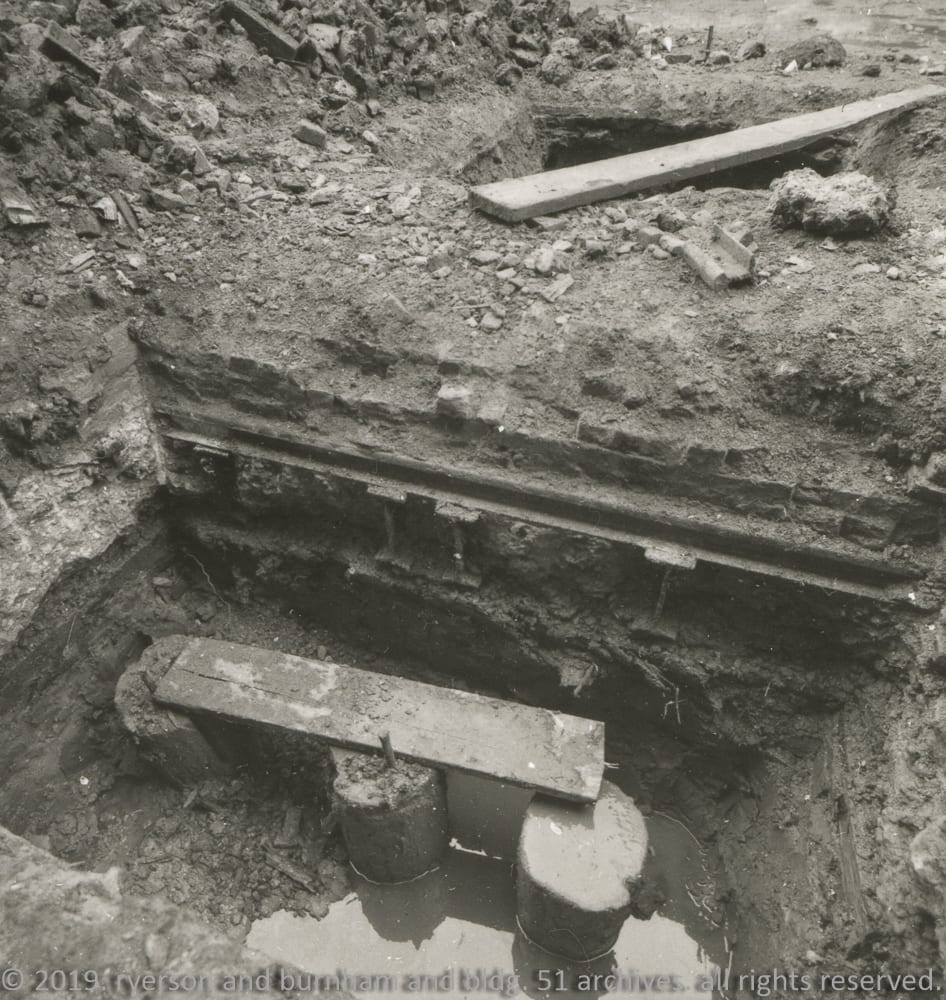
dankmar reflects on driving the first piles of the schiller opera house and office building in a january 1893 article in the inland architect and news record: “the adjoining building had settled six inches and had to be raised on screws, and throughout the driving of the piles necessitated constant watchfulness”. only one of the four surrounding buildings, the one with the least efficient foundation, was the only one by which such attention was not required and the piles were driven right up to the line without movement of the walls. the pile-driving led to an apparent readjustment of the particles of clay and sand into a jelly-like liquid.
joseph k freitag – architectural engineering – 1906
the schiller theatre building was not all successful and in pile-driving, the adjacent building owners of the borden block filed a suit for damaged sustained to their buildings.
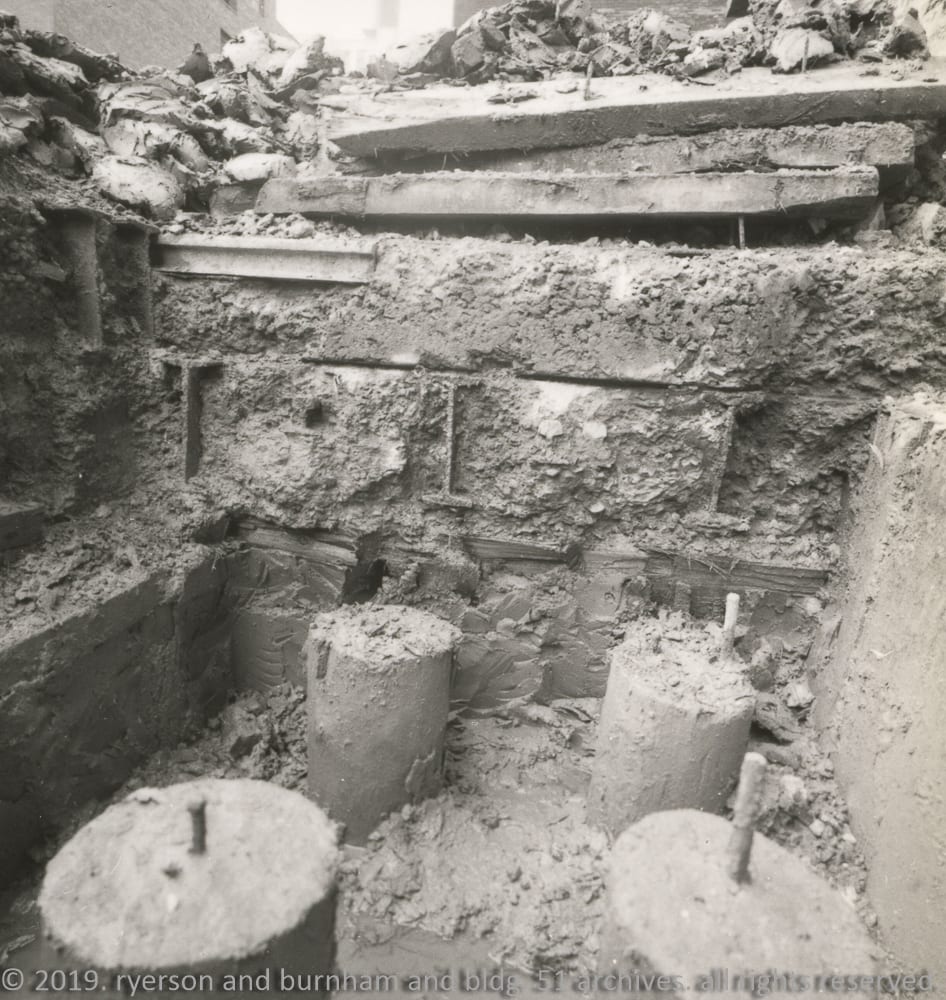
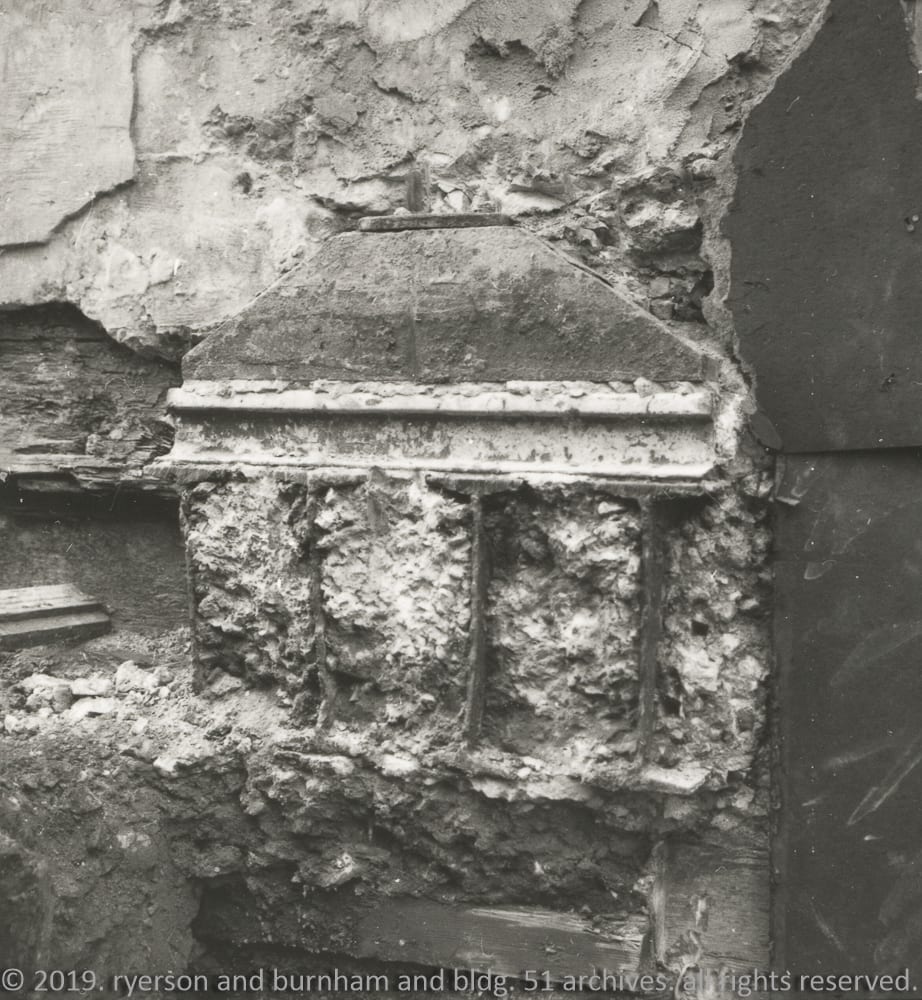
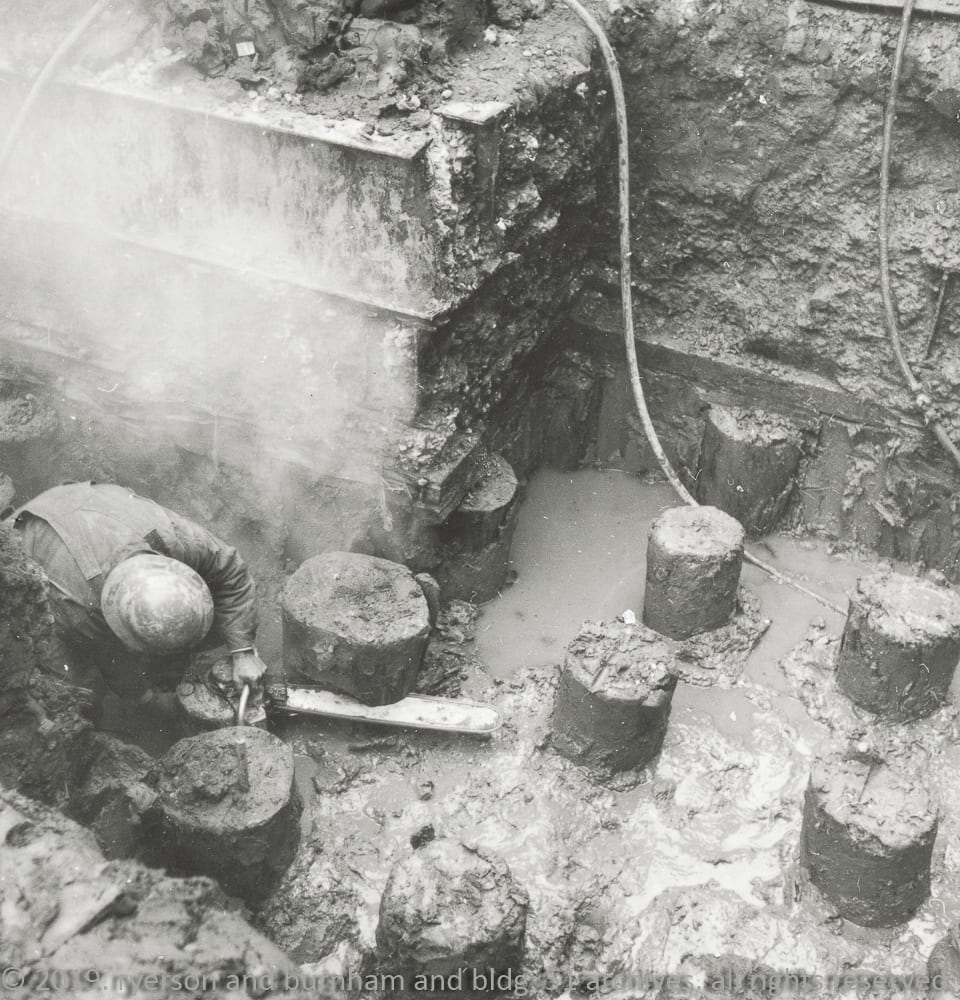
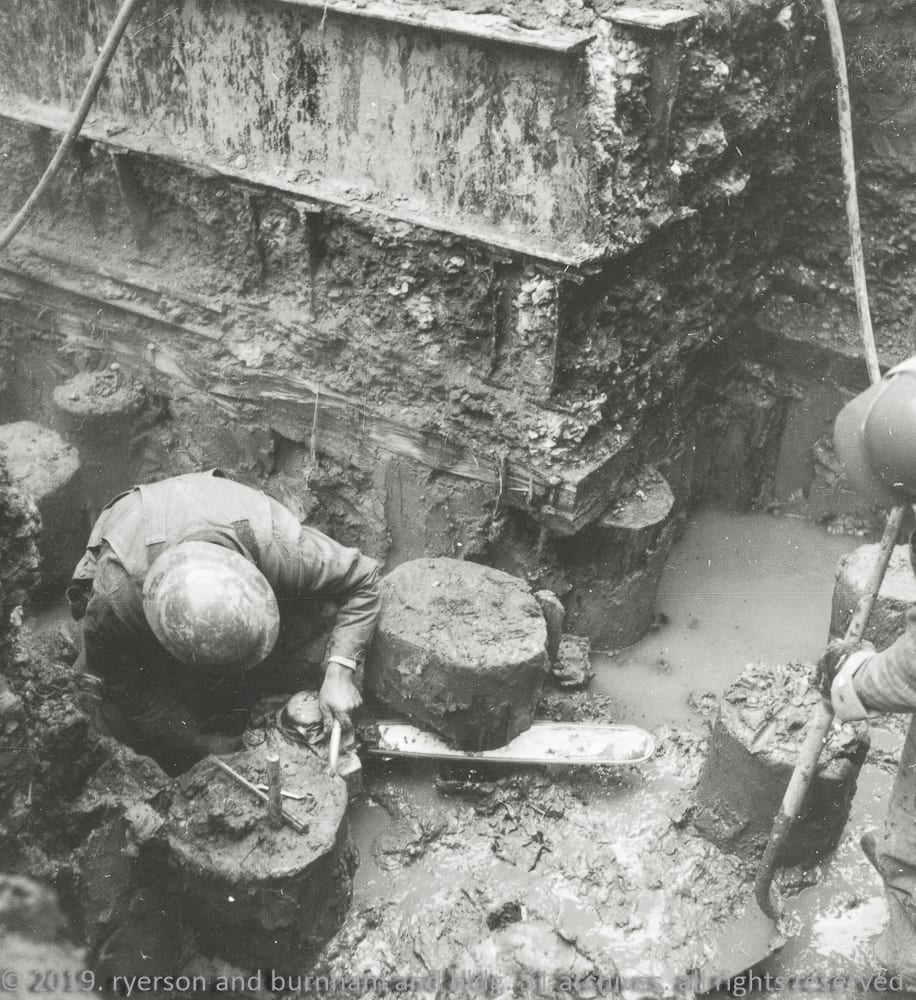
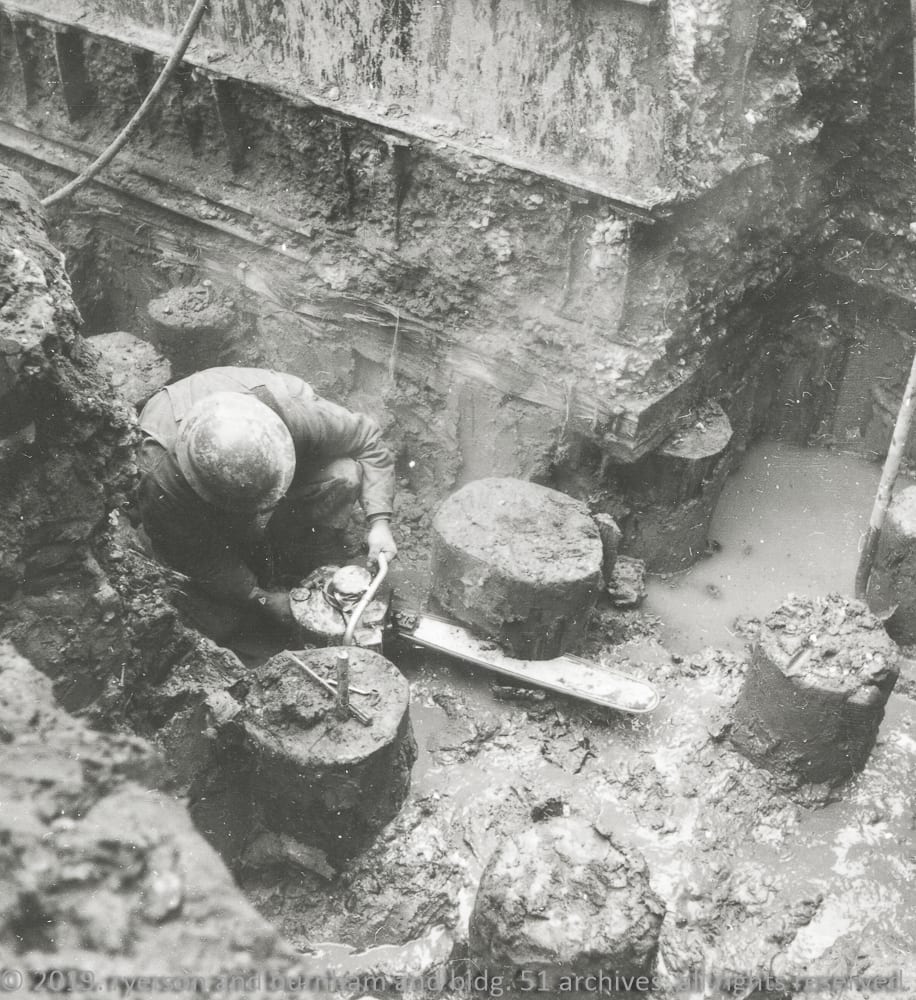
louis h sullivan – the economist – july 1916
louis h sullivan states that he thought it would be a good idea to put in “foundations that would not settle”. he suggested that adler put in piles - resulting in 770 piles under the schiller theater – the first time to his knowledge that piles were used in a downtown building.
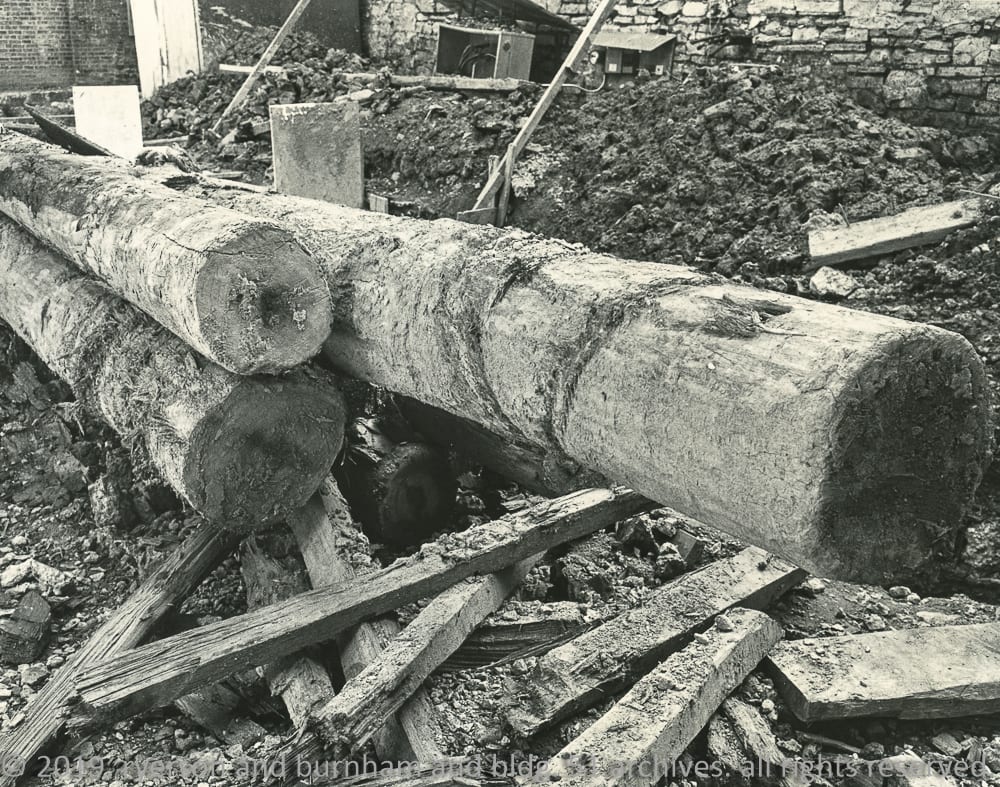
This entry was posted in , Miscellaneous, Bldg. 51, Events & Announcements, Featured Posts & Bldg. 51 Feed on January 4 2020 by Eric
WORDLWIDE SHIPPING
If required, please contact an Urban Remains sales associate.
NEW PRODUCTS DAILY
Check back daily as we are constantly adding new products.
PREMIUM SUPPORT
We're here to help answer any question. Contact us anytime!
SALES & PROMOTIONS
Join our newsletter to get the latest information
























